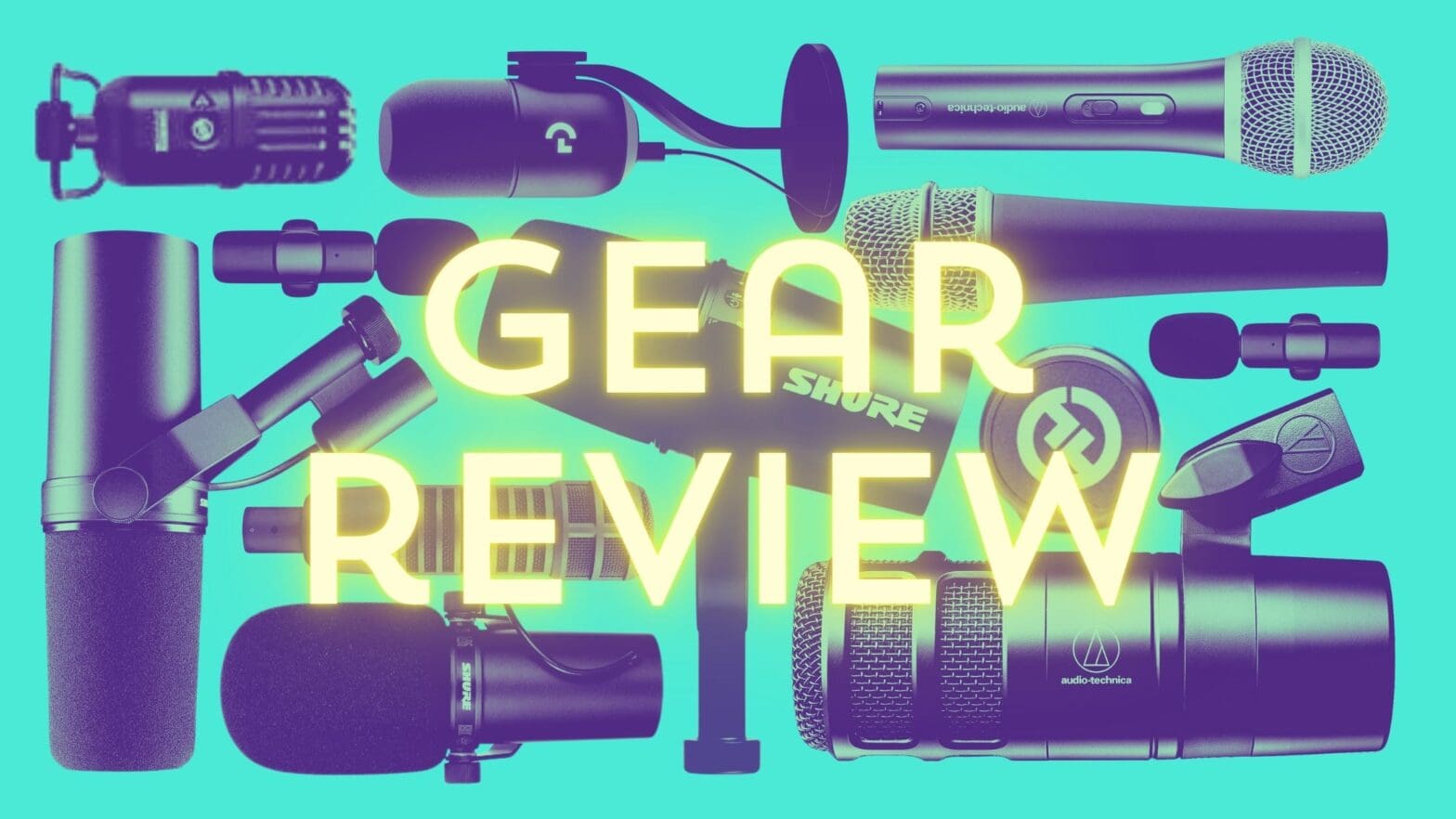So, you’ve got an awesome idea for a podcast and have a lot to say. Perfect. But you might as well be speaking to a brick wall if you don’t have the best podcast mic to make your voice sound great doing it.
Pro-quality sound is a necessity for podcasters, especially if you want to separate yourself from the bush league. A solid mic can offer clarity, presence, dynamics, and balance to your voice and those of your co-hosts and guests, and can be had for a wide range of budgets and for all kinds of uses, whether you record in a studio, your dining room, or out in the wild on location.
But where to start? All microphones are not created equal. From the all-in-one convenience and software features of USB microphones and the variety and quality that XLR mics can provide to excellent-sounding compact portable microphones, there’s one perfect for your needs. We’ve done a deep dive into some of the best podcast microphones around, and believe us, the waters are deep. Here are some of our favorites for a variety of budgets and uses.
Shure MV7
$249
The best overall podcasting microphone
Pros:
- ✅ USB and XLR connectivity
- ✅ Benchmark Shure brand
- ✅ Natural, accurate sound
- ✅ Compact and versatile
Cons:
- 🚫 Somewhat pricey
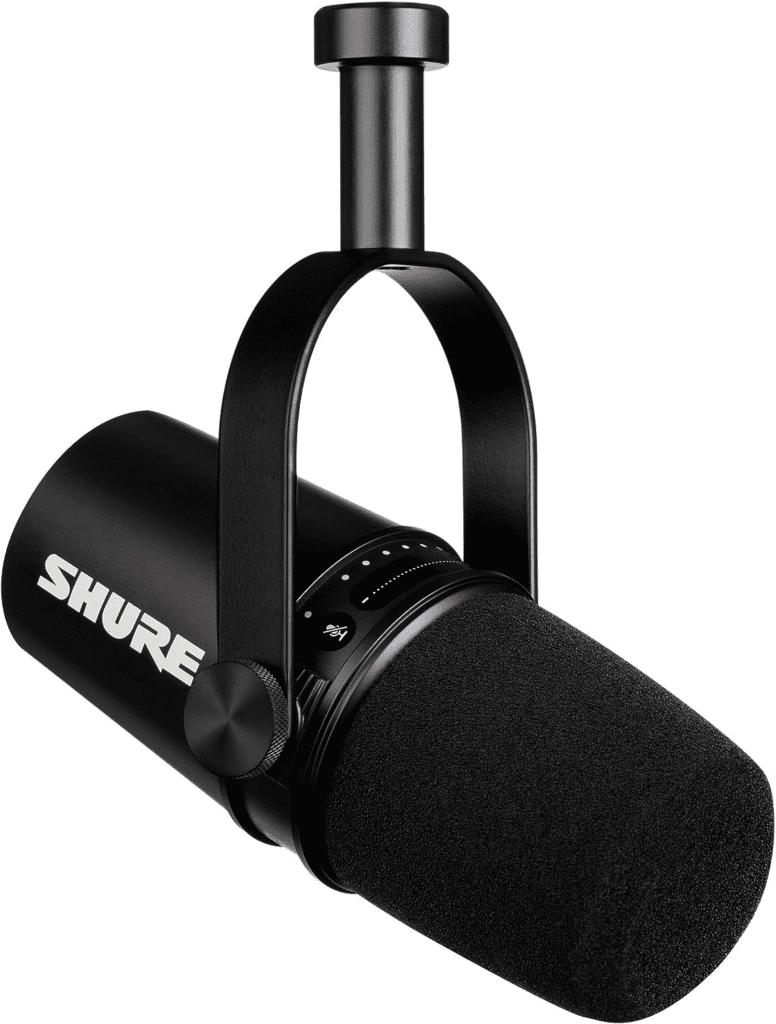
If you’ve ever stepped foot in a recording studio or spent any time on an open-mic stage, it’s pretty likely that you’ve seen a Shure microphone either focused at a guitar amp or sitting on a mic stand. They are the workhorses of the audio world, so It’s no wonder that the iconic brand has found its way to the top of the podcast pyramid, too.
When choosing the best mic for podcasting, even though Shure is on the pricier end of the spectrum, what you get with the Shure MV7 is pro-level sound quality and the versatility of both USB and XLR connections.
What this means is that you get the best of both worlds: the MV7 is a plug-and-play mic that connects right to your computer, audio interface, or even smartphone by USB with excellent auto levelling, tone control, and more, through Shure’s top-notch MOTIV app. In addition, you have a professional XLR mic that you can connect to your own audio interface or mixing console as you see fit. It’s known for its natural, un-colorized sound that lets you add your own preferred EQ or tones live or in the edit.
The Shure MV7 is a dynamic cardioid microphone, which means that it does a great job at capturing your voice from right in front of it while isolating it from any background noise. This may be a limitation if you want to use one mic for multiple people (we have suggestions below for that, too), but for what it does, and for the price, it doesn’t get much better than the MV7 (except maybe from its big brother, the $400 SM7B).
Logitech G Blue Yeti
$129
The best USB microphone
Pros:
- ✅ Super easy to use
- ✅ USB connectivity
- ✅ Multiple mic pickup patterns
- ✅ Headphone jack
- ✅ Level control
Cons:
- 🚫 Needs a pop guard
- 🚫Stand isn’t too moveable
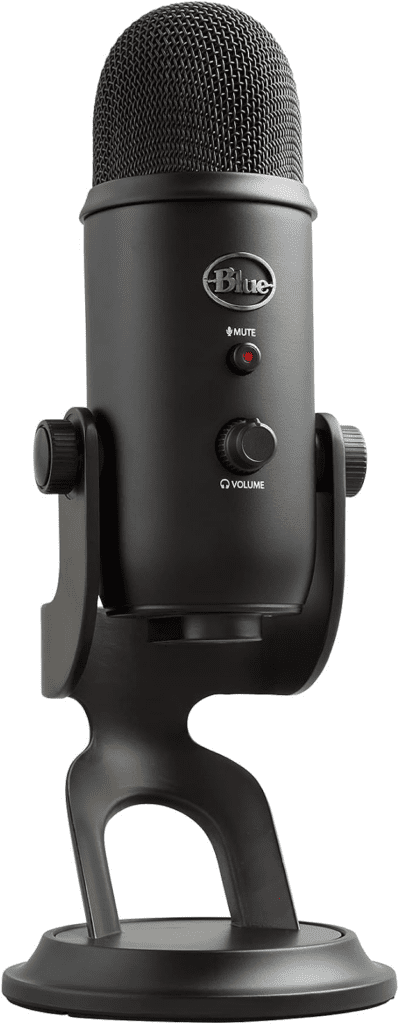
Almost as ubiquitous as Shure mics when it comes to live streaming and podcasting mics, the Blue Yeti has been there through it all and can just as easily be found being used on Twitch and Zoom as it can on a podcast desk. In 2018, Logitech bought Blue Microphones, relegating the Blue brand to describe its technology, but merging Yeti under its Logitech G brand.
Confused? All you need to know is that the Yeti is still excellent, and still favored by podcasters, musicians, and other sound-recording folks alike for great sound and switchable microphone patterns. The Logitech G Blue Yeti features four different modes:
- Cardioid
- Omnidirectional
- Figure 8
- Stereo
These four modes make the Yeti a versatile option for recording (respectively):
- A single voice from the front
- Sound from all around the mic from, say, room atmosphere and groups of people
- Two voices or sources from opposing sides of the mic, like in an interview
- Left and right stereo channels, which is great for ASMR or live music performances.
There’s also further processing and fine-tuning you can do with the Yeti’s included Blue Vo!ce software that allows you to EQ and add filters and effects.
Just connect the Yeti through its USB output directly to a computer, portable recording device, or a podcasting control interface, and you’ll be up and running.
It includes a built-in 3.5mm headphone input and volume control that make it easy to monitor your voice. The gain knob allows you to easily adjust levels.
The Yeti sounds great, is still one of the easiest to use, and most versatile microphones out there. Logitech also offers some excellent compatible stands and desk boom arms that will keep your hands off the mic and rumble at bay.
Audio-Technica ATR2100x-USB
$79
The best budget mic for podcasting
Pros:
- ✅ Affordable
- ✅ USB and XLR connectivity
- ✅ Great for beginners
- ✅ Quality Audio-Technica sound
- ✅ Easy to use
Cons:
- 🚫 Included stand is a bit flimsy
- 🚫 Doesn’t have “the look”
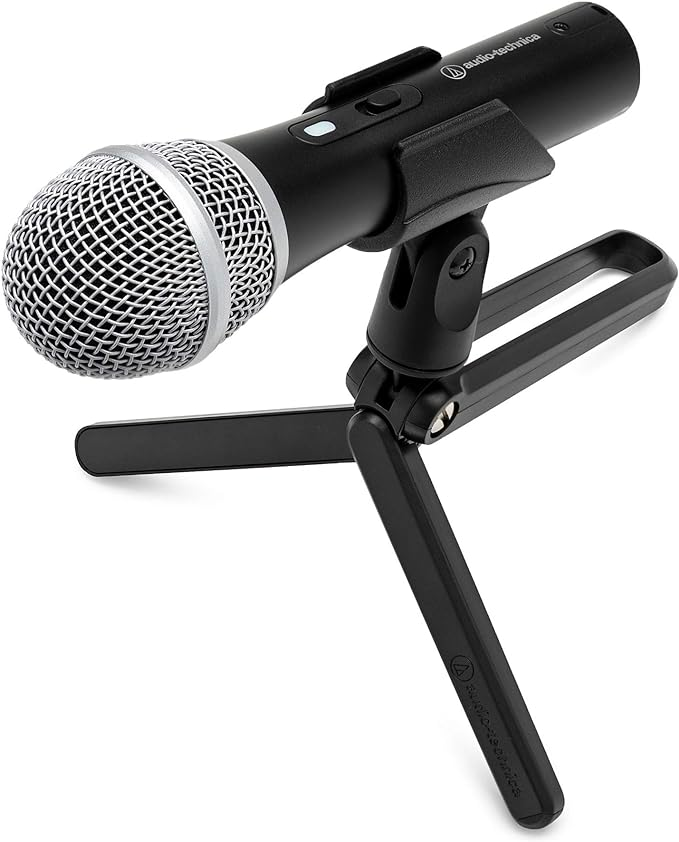
If you’re just starting your podcast journey, want to save some money, and your idea of a microphone is more like the shape of the Audio-Technica ATR2100x-USB, then you can tick all these boxes and rest assured you’re getting a great-sounding mic.
At just $79, the ATR2100x is a no-brainer. With USB connectivity, it’s plug-and-play friendly with Mac and Windows computers and recording/podcasting/streaming software (with built-in high-quality digital conversion up to 24-bit/192kHz). But its XLR analog output means it can be used with a conventional sound setup if you want to use it for music creation, or you can run it through an analog to digital converter (ADC) into a computer, too.
The ATR2100x is a dynamic cardioid microphone, which means it’ll pick up your voice with excellent clarity while keeping the noise in the background at bay for clean podcast or streaming recordings
The mic itself can be held in your hand or mounted on its included mini tripod stand that, although a bit flimsy, does the trick and keeps things stable.The mic also includes a headphone input and volume control so you can hear yourself clearly as you record.
Beginners will appreciate the ATR2100x’s two included 6.6-foot USB cables (USB-C to USB-C, USB-C to USB-A) and 9.8-foot XLR cable to get you up and recording without a return trip to the electronics store.
Hollyland Mark M2
$179
The best portable mic for on-the-go recording
Pros:
- ✅ Direct connectivity to smartphones, cameras, PC
- ✅ Comes with two mics
- ✅ 10-hour battery life
- ✅ Noise cancellation
- ✅ Excellent companion app
- ✅ 24-bit/48kHz recording
- ✅ Wireless
Cons:
- 🚫 Wireless (it’s a pro and a con)
- 🚫 Pricey for those on a budget
- 🚫 Case is a bit big
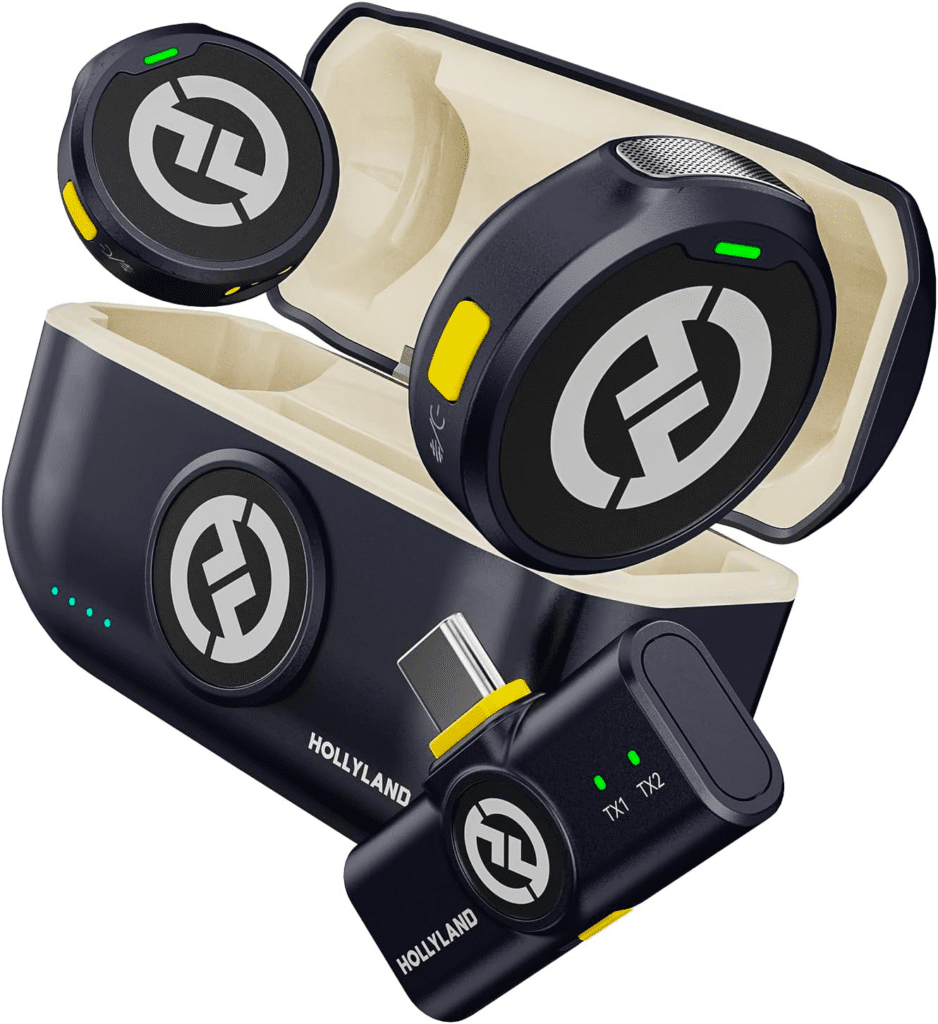
You never know when a podcast might break out. You could be on a plane or a bus, at a convention, or just hanging out at a friend’s house. If someone’s got something fun or interesting to say, wouldn’t it be great if you could reach into your backpack and pull out a set of tiny, great sounding clip mics and your iPhone and record?
Whether you’re recording just audio or you’ve got your phone (or podcasting video camera) setup for video, the Hollyland Mark M2 portable wireless mic kit has everything you need for on-the-go podcast recording, vlogging, or whatever..
For our purposes, we’re talking about the top-of-the line combo kit, which includes a Lightning transmitter for older iPhone models, a USB-C for newer iPhone and Android phones, and a third for connecting to computers and cameras, as well as two tiny wireless clip-on microphones, the charging case, furry windscreens, cables and other accessories,
Just choose your recording device, connect the appropriate transmitter, and record using your app of choice on your phone or on your camera. The M2’s tiny microphones clip on to just about anything, connect wirelessly (up to a crazy 1,000 feet… though with diminishing returns), and can record clear sound at up to lossless 24-bit/48kHz for up to 10 hours on a charge (40 hours total from the charging case).
The LarkSound app (Android | iOS) is well-designed and allows further controls, such as level control, Environmental Noise Cancellation (ENC) to hush background and ambient noise. You can save some money, too, if you know you’ll just need one version for, say, your iPhone, but for the price why not have the option for recording what you need when you need it.
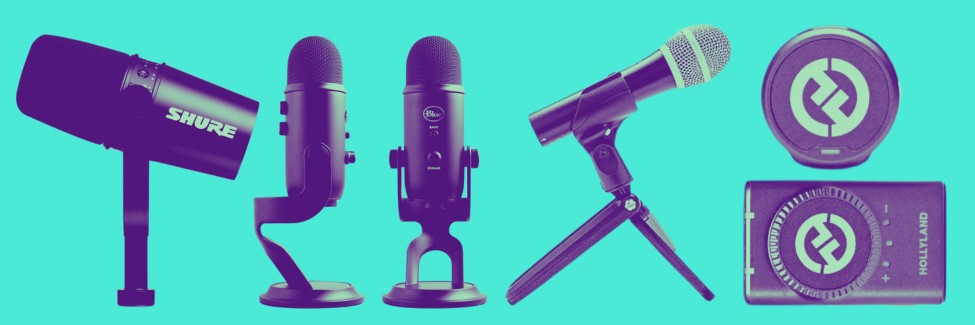
The best podcast mic is one that works seamlessly with your podcast’s format (in the studio or out and about), will allow you to get the best sound for your budget, and offers versatility with its connections. We’ve just scratched the surface here with our picks, but hopefully you’ve found one that suits your needs or gives you a better idea of what to look for.
Special Creator Day live stream
📅 April 23, 2024
⏰ 6 – 7:30pm PST
What’s next in creator tech? Join BENlabs CEO Ricky Ray Butler, host Judah Lee, and creators King Bach, Hannah Stocking, and Kris London for a special Creator Day event, streaming live from LA.
